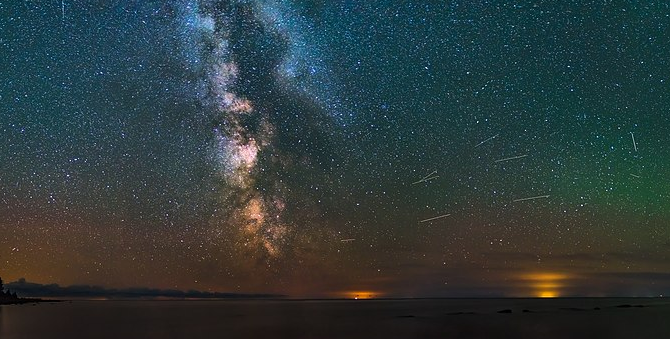August nights offer the perfect opportunity to catch stunning views of the Milky Way and meteor showers.
Others are reading now
The first week of August is one of the best times of the year to witness both “shooting stars” and the Milky Way, even without a telescope.
Here’s why this is the perfect time to stargaze and how you can get the best view.
As August begins, the skies are particularly favorable for stargazing because of the moon’s phase, according to LiveScience. This year, there’s a new moon on August 4, meaning the skies will be dark and free from moonlight until about August 8.
This lack of moonlight creates ideal conditions for spotting faint celestial sights, including meteor showers and the Milky Way.
Also read
How to Find the Perfect Spot
To see these astronomical wonders, you’ll need a dark sky, free from the interference of artificial lights.
The best way to achieve this is by distancing yourself from city lights. You might consider visiting an International Dark Sky Place or a Dark-Sky Preserve, where artificial light is minimized. Alternatively, use a light pollution map to locate a dark spot near you.
Once you’ve found your dark spot, the next step is timing. The new moon on August 4 ensures a moonless sky, creating the perfect backdrop for stargazing until around August 8.
What to Look For
In the Northern Hemisphere, true darkness won’t set in until midnight, but if you look to the southeast after nightfall, you’ll have a great chance of seeing the Milky Way’s Sagittarius arm stretching across the sky. To the naked eye, the Milky Way appears as a hazy band of light.
If you need help locating it, look for the “Summer Triangle” — three bright stars named Vega, Deneb, and Altair, high in the southeast sky. The Milky Way flows through this triangle, roughly from Deneb to Altair.
Early August is also prime time for meteor showers, with three active during this period. Although the Delta Aquariids and Alpha Capricornids are waning and not particularly prolific, they’ll still contribute a few meteors per hour. But the Perseid meteor shower is on the rise, peaking on August 11-12.
During the peak, you could see between 50 to 75 meteors per hour after midnight, making it one of the most anticipated meteor showers of the year.
No Telescope Needed
While a pair of stargazing binoculars or a small telescope can enhance your view, especially for focusing on specific stars or nebulas within the Milky Way, you don’t need any special equipment to enjoy the show.
Just find a dark spot, look up, and enjoy the cosmic display.
After the Perseids peak, the moon will become brighter, eventually turning into a full “Sturgeon Moon” on August 19. It will move out of the pre-midnight sky by August 26, allowing for more opportunities to see the Milky Way as the month progresses.
Happy stargazing!


